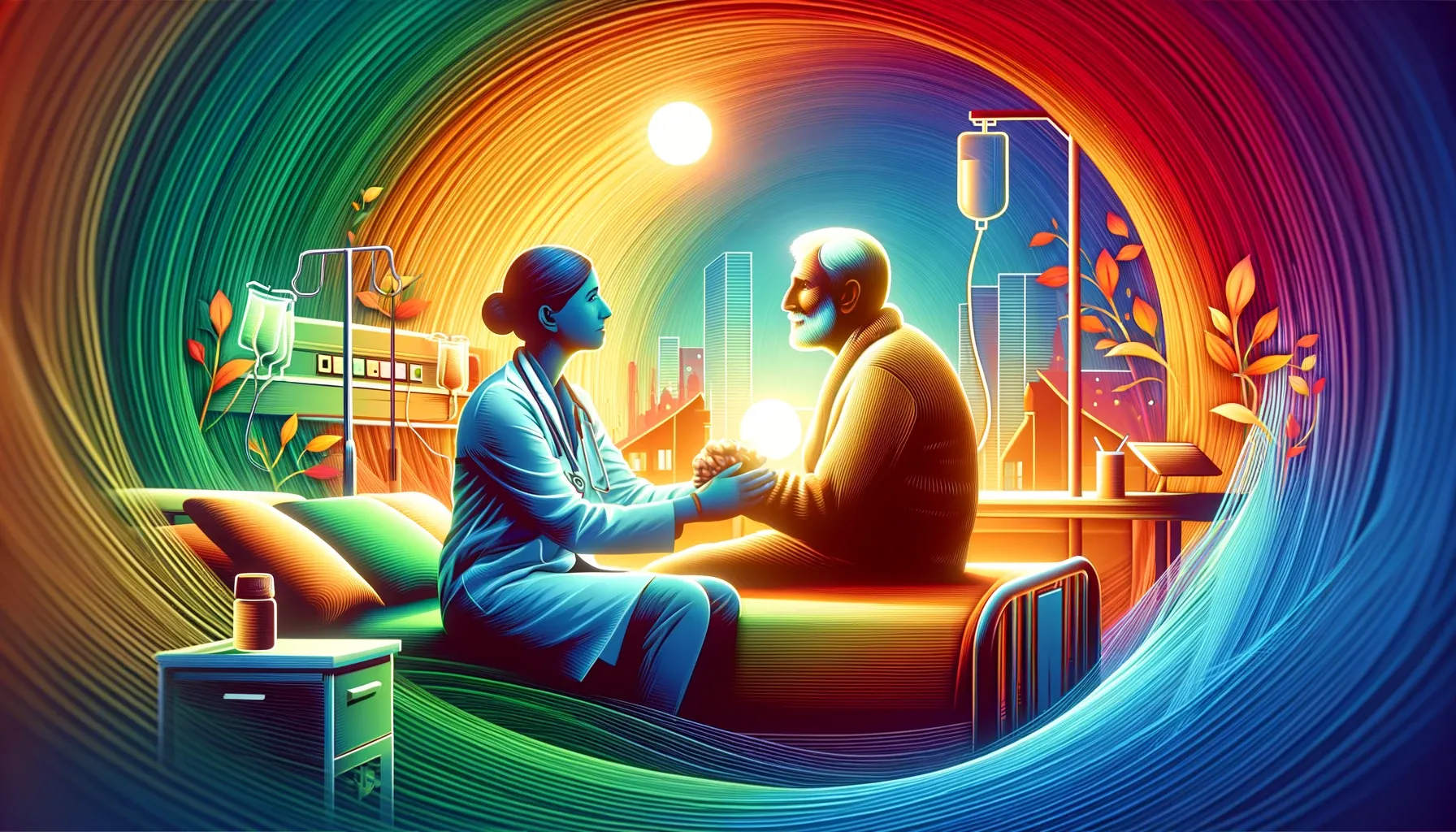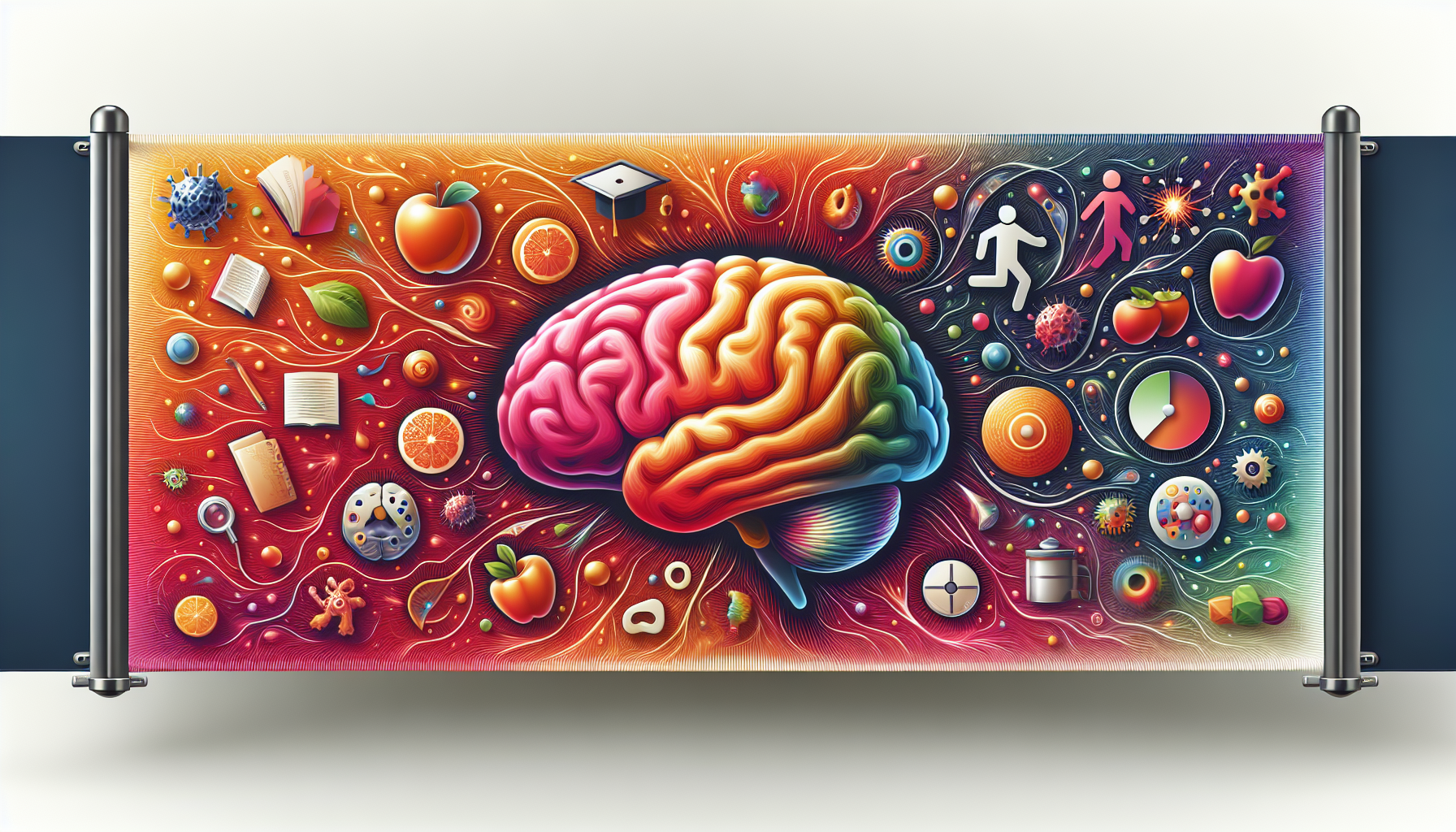On this page
BJ Miller's TED talk shares his personal experience with a near-death event and how it shaped his perspective on the American healthcare system's approach to death and dying. Criticizing the system's disease-oriented focus, he advocates for a more patient-centered approach that prioritizes comfort and well-being, especially at the end of life. He discusses the importance of palliative care, the role of caregivers, and the potential for beauty and meaningful experiences in unlikely places like hospitals. The speaker emphasizes that small moments and sensory experiences can provide immense comfort and connection, and highlights the need for systemic changes to handle the growing number of individuals living with chronic and terminal illnesses.

How does it apply to you?
This learning can be applied in a real-world scenario by healthcare professionals, caregivers, and designers who are working towards creating a more compassionate, human-centered healthcare system. It could also be useful for individuals who are navigating chronic or terminal illnesses, either personally or within their family.
Applied Learning to Developer Enablement
The speaker's personal experience with the healthcare system, particularly the emphasis on disease rather than people, can be paralleled to software development. Often, developers focus on technical aspects and forget about the end-user. This serves as a reminder to design software with the user's needs in mind.
The distinction between necessary and unnecessary suffering can be applied to the challenges faced in software development. Necessary suffering, such as bugs and errors, are inherent to the process. However, unnecessary suffering, such as poor communication or lack of planning, can be mitigated.
Similarly, the speaker's invitation to redesign the experience of death can be seen as a call to innovate and rethink traditional methods in software development. This can be applied to creating more user-friendly interfaces and improving user experience.
Developer Checklist
User Experience in Software Development
Respect and Dignity in Software Design
Innovation and Adaptation in Software Development
Summary
Personal Experience with Death and The Healthcare System
The speaker narrates his personal encounter with death when he was electrocuted with 11,000 volts while climbing a parked train during his sophomore year in college. This event sparked his journey as a patient and eventually a physician in the American healthcare system, which he criticizes for being designed around diseases rather than people. He emphasizes that healthcare workers generally have good intentions, but are part of a system that often fails to serve its patients adequately.
Invitation to Redesign the Experience of Death
The speaker invites a cross-disciplinary, design-oriented approach to reimagine the experience of dying. He emphasizes the opportunity to rethink the process of dying, identifying it as a universal issue that affects everyone. He also highlights the distinction between necessary suffering, which is an inherent part of life and death, and unnecessary suffering, which is a product of our systems and can be changed.
Necessary vs Unnecessary Suffering
The speaker discusses the difference between necessary and unnecessary suffering. Necessary suffering, such as the loss of limbs, is an inherent part of life that people must accept and adapt to. Unnecessary suffering, on the other hand, is caused by systems and can be changed. He emphasizes that the role of caregivers is to relieve suffering, not add to it.
Palliative Care and Living Well
The speaker introduces the concept of palliative care, which is about comfort and living well at any stage of life, not just at the end. He uses the example of a patient named Frank, who despite his advancing prostate cancer and long-standing HIV, continues to live life fully and adventuresomely, such as rafting down the Colorado River.
Shift in Perspective and Visual Art
The speaker discusses the transformative power of perspective, particularly after experiencing a life-altering accident. By studying visual art, the speaker sought to learn about perception, a potent lesson for those who cannot change their circumstances. This idea is encapsulated in the metaphor of turning anguish into a flower, which signifies the human ability to transform suffering into something beautiful or meaningful.
Zen Hospice Project and Rituals
The speaker works at the Zen Hospice Project in San Francisco, where a unique ritual is practiced to shift perspective during death. When a resident dies, everyone who wishes to participate shares a story, a song, or silence, and the body is sprinkled with flower petals. This ritual aims to usher in grief with warmth, contrasting the sterile and impersonal experience often associated with hospitals.
Critique of Hospitals
Hospitals, despite their life-saving capabilities, are critiqued for their sterile and dehumanizing environments. The speaker argues that while hospitals are necessary for acute trauma and treatable illness, they are ill-suited for living and dying. The speaker highlights the need for more humane institutions and the potential for beauty to be found in unlikely places.
The Importance of Small Moments
The speaker emphasizes the importance of small, stolen moments in a hospital setting. An example is given of a nurse smuggling a snowball into the speaker's room, providing a moment of joy and connection to the world outside the hospital. These moments can provide immense inspiration and comfort to patients.
The State of Chronic and Terminal Illness
The speaker discusses the increasing number of individuals living with chronic and terminal illnesses and the aging population, calling it a 'silver tsunami'. There is an urgent need for infrastructure that can handle these shifts in population demographics. The speaker emphasizes the need for policy, education, training, and physical infrastructure to tackle these issues.
What Matters Most to the Dying
Research has shown that comfort, feeling unburdened, existential peace, and a sense of wonderment and spirituality are most important to those nearing death. The speaker shares experiences from the Zen Hospice Project, highlighting the importance of seemingly small things that provide comfort and a sense of normalcy to the dying.
The Importance of Sensory Experience
The speaker emphasizes the importance of sensory experiences and the physical body in living and dying. The Zen Hospice Project's kitchen is highlighted as a poignant room where residents who cannot eat much, if at all, are provided with sustenance on several levels, including the smell of food.
The Power of Sensorial Delights
The speaker discusses the importance of sensorial delights, such as baking cookies, in making us feel human and connected. This is particularly significant for people living with dementia. These primal sensorial experiences can communicate what words cannot, and encourage an existence in the present, without the need for past or future.
Design Cues for Dignity
The speaker introduces two design cues for improving the system. The first is to eliminate unnecessary suffering and the second is to maintain dignity through sensorial experiences and aesthetics. These principles guide the design towards a more humane and dignified approach.
Shifting Focus to Well-being
The speaker suggests that the focus should be shifted towards well-being, making life more wonderful instead of just less horrible. This involves a transition from a disease-centered to a patient-centered model of healthcare, where caring becomes a creative and generative act.
The Role of Play in Adaptation
The speaker discusses the concept of 'play' as a form of adaptation, stating that every major human necessity has given birth to creative responses, such as cuisine, architecture, fashion, and music. The speaker suggests that dying, as a necessary part of life, could also inspire creative responses.
Making Space for Life to Play Out
The speaker emphasizes the importance of making space for life to play itself all the way out. By doing so, aging and dying can become a process of crescendo through to the end. The speaker advocates for designing towards death, rather than trying to solve or avoid it.
Finding Beauty in Life
The speaker shares personal experiences about finding beauty and meaning in life, despite the inevitability of death. The speaker suggests that by loving life's fleeting moments, we can learn to live well because of death, not in spite of it. The speaker concludes by encouraging the audience to let death be what takes us, not lack of imagination.
FAQs
What sparked the speaker's journey as a patient and eventually a physician in the American healthcare system? The speaker's personal encounter with death when he was electrocuted with 11,000 volts while climbing a parked train during his sophomore year in college sparked his journey.
What does the speaker invite us to do in terms of the experience of death? The speaker invites a cross-disciplinary, design-oriented approach to reimagine the experience of dying.
What is the difference between necessary and unnecessary suffering according to the speaker? Necessary suffering, such as the loss of limbs, is an inherent part of life that people must accept and adapt to. Unnecessary suffering, on the other hand, is caused by systems and can be changed.
What is palliative care according to the speaker? Palliative care is about comfort and living well at any stage of life, not just at the end.
What is the unique ritual practiced at the Zen Hospice Project in San Francisco? When a resident dies, everyone who wishes to participate shares a story, a song, or silence, and the body is sprinkled with flower petals.
What critique does the speaker have about hospitals? Hospitals, despite their life-saving capabilities, are critiqued for their sterile and dehumanizing environments.
What is the importance of small moments in a hospital setting according to the speaker? Small, stolen moments in a hospital setting can provide immense inspiration and comfort to patients.
What is the 'silver tsunami' the speaker refers to? The 'silver tsunami' refers to the increasing number of individuals living with chronic and terminal illnesses and the aging population.
What matters most to those nearing death according to research? Comfort, feeling unburdened, existential peace, and a sense of wonderment and spirituality are most important to those nearing death.
What is the importance of sensory experiences in living and dying according to the speaker? Sensory experiences and the physical body are important in living and dying.
What is the significance of sensorial delights like baking cookies? Sensorial delights make us feel human and connected. This is particularly significant for people living with dementia.
What are the two design cues for improving the system introduced by the speaker? The first is to eliminate unnecessary suffering and the second is to maintain dignity through sensorial experiences and aesthetics.
What shift in focus does the speaker suggest for well-being? The speaker suggests that the focus should be shifted towards well-being, making life more wonderful instead of just less horrible. This involves a transition from a disease-centered to a patient-centered model of healthcare.
What role does 'play' have in adaptation according to the speaker? 'Play' is a form of adaptation, and every major human necessity has given birth to creative responses, such as cuisine, architecture, fashion, and music. The speaker suggests that dying, as a necessary part of life, could also inspire creative responses.
What does the speaker mean by 'making space for life to play out'? Making space for life to play out means allowing aging and dying to become a process of crescendo through to the end. The speaker advocates for designing towards death, rather than trying to solve or avoid it.
How does the speaker suggest finding beauty in life? The speaker suggests that by loving life's fleeting moments, we can learn to live well because of death, not in spite of it. The speaker concludes by encouraging the audience to let death be what takes us, not lack of imagination.
Glossary
Chronic Illness: A long-lasting health condition that may not have a cure. It can affect a person's lifestyle in different ways.
Cross-disciplinary: Involving different areas of knowledge or study.
Dementia: A group of thinking and social symptoms that interferes with daily functioning.
Existential Peace: A sense of peace or tranquility derived from acceptance of one's existence and reality.
Necessary Suffering: Suffering that is an inherent part of life and death, which people must accept and adapt to.
Palliative Care: Specialized care for people with serious illnesses. It focuses on providing relief from the symptoms and stress of the illness.
Sensorial Delights: Experiences that engage and stimulate the senses, providing pleasure or enjoyment.
Terminal Illness: A disease or condition which is expected to result in death.
Unnecessary Suffering: Suffering that is caused by systems and can be changed.
Zen Hospice Project: A unique approach to end-of-life care that combines medical, spiritual, and psychological support with an emphasis on mindfulness and quality of life.
Design Cues: Principles or standards that guide the design process towards a specific outcome. In the context of the talk, the speaker introduces two design cues for improving the system - eliminating unnecessary suffering and maintaining dignity through sensorial experiences and aesthetics.







